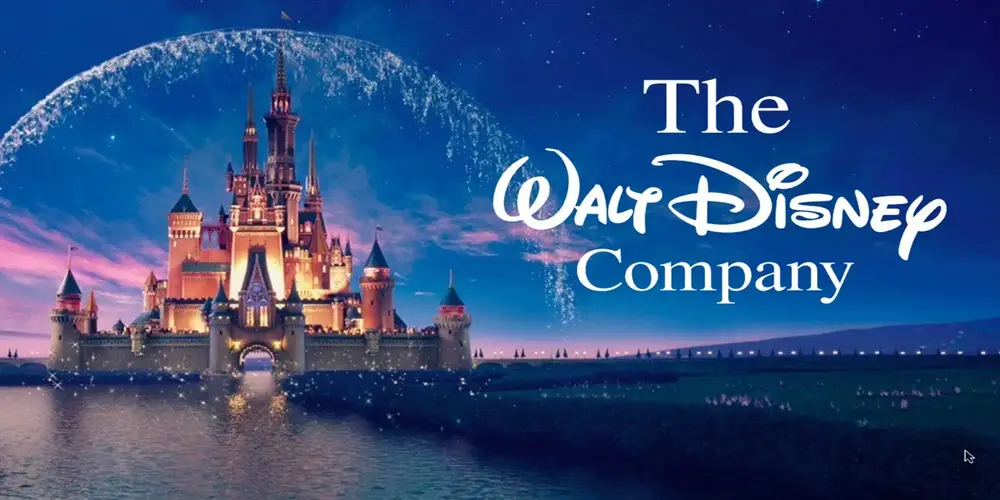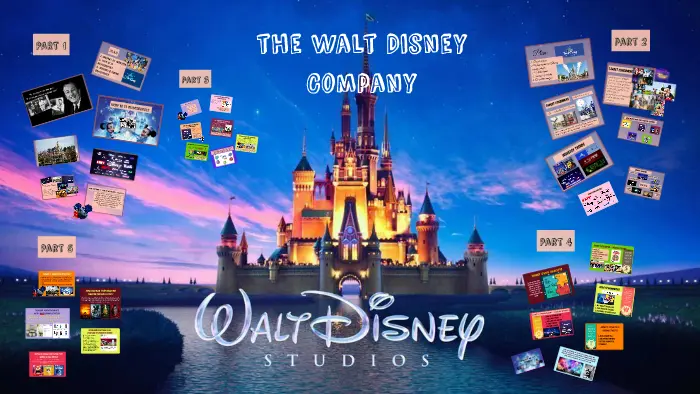Walt Disney PESTLE Analysis: Welcome to this PESTLE analysis of the Walt Disney Company. In this article, we will analyze the external factors that can impact the operations and profitability of Disney. PESTLE analysis is a useful tool for businesses to understand the macro-environmental factors that can affect their performance.
By examining the political, economic, social, technological, legal, and environmental factors that can impact Disney, we can gain insights into the opportunities and challenges facing the company. This analysis will provide a comprehensive overview of the external factors that Disney must consider to remain competitive and successful in the global entertainment industry. Let’s dive into the PESTLE analysis of Walt Disney.
Let’s dive into each factor and see how it impacts Walt Disney.
Contents
About Walt Disney
| Information | Details |
| Company Name | Walt Disney Company |
| CEO | Bob Chapek |
| Founder | Walt Disney |
| Year Founded | 1923 |
| Ticker Symbol | DIS |
| Company Type | Public |
| Headquarters | Burbank, California, United States |
| Annual Revenue | $65.4 billion (2020) |
| Profit – Net Income | $12.6 billion (2020) |
| Number of Employees | 223,000 (2020) |
| Products & Services | Media Networks, Parks and Resorts, Studio Entertainment, Consumer Products, and Interactive Media |
| Official Website | https://www.thewaltdisneycompany.com/ |
Top 10 Competitors of Walt Disney
Walt Disney’s Top 10 Competitors:
- Comcast Corporation
- Time Warner Inc.
- Netflix Inc.
- Amazon.com Inc.
- CBS Corporation
- ViacomCBS Inc.
- Sony Corporation
- Warner Bros. Entertainment Inc.
- Twenty-First Century Fox Inc.
- DreamWorks Animation LLC.
PESTLE Analysis Of Walt Disney
PESTLE Analysis of Walt Disney is brand-based. In this Article, We will learn About the Six key elements of the PESTLE Analysis of Walt Disney. By paying attention to the following Six components of the PESTLE Analysis, a business can maximize its chances of a product being recognized and bought by customers.
Political Factors in the Walt Disney PESTLE Analysis:
The political factors in the Walt Disney PESTLE Analysis can be explained as follows:
Government regulations and policies can have a significant impact on Disney’s operations, particularly in areas such as labor laws, environmental regulations, and tax policies. For example, Disney has faced criticism over its labor practices, particularly about wages and working conditions for theme park employees. In response, Disney has made some changes to its policies, such as raising the minimum wage for employees, but it still faces scrutiny from labor rights groups and government officials.
Disney also operates in many different countries, which means it has to navigate different political environments and regulatory regimes. For example, Disney has had to adapt its content and business practices to comply with local laws and cultural norms in countries such as China and the Middle East. This can create challenges for the company, as it may have to modify its products and services to meet local regulations and consumer preferences.
Political instability is another factor that can impact Disney’s operations, particularly in the travel and tourism industry. Wars, terrorist threats, or natural disasters can disrupt travel plans and lead to reduced demand for theme parks and resorts. For example, following the 9/11 terrorist attacks in the United States, Disney’s theme parks experienced a significant decline in attendance.
Economic Factors in the PESTLE Analysis of Walt Disney:
Below are the economic factors in the PESTLE Analysis of Walt Disney:
Economic conditions can have a significant impact on consumer spending, which in turn can affect demand for Disney’s products and services. For example, during economic downturns or recessions, consumers may have less disposable income to spend on entertainment and leisure activities such as theme parks and movies. This can lead to reduced revenue and profits for Disney’s businesses.
Currency fluctuations can also impact Disney’s operations, particularly for its international businesses. Changes in exchange rates can affect the cost of goods and services, as well as the profitability of international operations. For example, in recent years, the strength of the US dollar has made it more expensive for foreign visitors to visit Disney’s US-based theme parks.
Supply chain disruptions and rising labor costs are other economic factors that can affect Disney’s operations. For example, disruptions to the supply chain can lead to delays or shortages of merchandise, which can impact consumer demand and revenue. Similarly, rising labor costs can impact Disney’s profitability, particularly in industries such as theme parks, where labor is a significant expense.
Social Factors in the Walt Disney PESTLE Analysis:
Following are the social factors impacting Walt Disney PESTLE Analysis:
Changing societal trends and preferences can have a significant impact on Disney’s operations. For example, the rise of digital streaming services has led to increased competition for Disney’s film and television businesses. To compete, Disney has launched its streaming service, Disney+, which has been successful in attracting subscribers.
Demographic changes are another social factor that can impact Disney’s operations. For example, as populations age, demand for certain types of entertainment and leisure activities may change. Disney has to adapt its products and services to remain relevant to different age groups and demographic segments.
Social media and other communication technologies have given consumers more power and influence over brands like Disney. This means that Disney must carefully manage its reputation and brand image to ensure that it aligns with consumer values and preferences. This is particularly important in areas such as environmental sustainability and diversity and inclusion, where consumers are increasingly demanding that companies take action.
Technological Factors in the PESTLE Analysis of Walt Disney:
The technological factors in the PESTLE Analysis of Walt Disney are mentioned below:
The entertainment industry is constantly evolving, and new technologies are emerging all the time. For Disney, this presents both opportunities and challenges. On the one hand, new technologies such as virtual reality, augmented reality, and artificial intelligence can enhance the company’s products and services, making them more immersive and engaging for consumers. For example, Disney has launched immersive experiences such as Star Wars: Galaxy’s Edge, which uses technology such as RFID bracelets and mobile apps to create an immersive and interactive experience for visitors to its theme parks.
On the other hand, new technologies can also disrupt traditional business models and lead to increased competition. For example, the rise of streaming services such as Netflix and Amazon Prime Video has disrupted the traditional film and television industry, making it more difficult for traditional studios like Disney to compete.
Cybersecurity is another important technological factor that can impact Disney’s operations. As a company that collects and stores large amounts of personal data on its customers, Disney is vulnerable to cybersecurity threats such as data breaches and hacking attempts. These threats can not only damage Disney’s reputation but also result in financial losses and legal liabilities.
Legal Factors in the Walt Disney PESTLE Analysis:
The following are the legal factors in the Walt Disney PESTLE Analysis:
As a large multinational company, Disney is subject to a range of laws and regulations in different jurisdictions. Intellectual property laws, in particular, are critical for Disney’s businesses, as the company’s iconic characters and franchises are its most valuable assets. Disney has a large portfolio of trademarks, copyrights, and patents that it uses to protect its intellectual property rights and prevent others from infringing on its brands.
Compliance with labor laws is another important legal factor that can impact Disney’s operations. As discussed in the previous section, Disney has faced criticism over its labor practices, particularly about wages and working conditions for theme park employees. Compliance with labor laws is not only important from a regulatory perspective but also from a reputational perspective, as consumer and employee perceptions of Disney can be impacted by the company’s labor practices.
Environmental Factors in the PESTLE Analysis of Walt Disney:
In the Walt Disney PESTLE Analysis, the environmental elements affecting its business are as below:
Environmental sustainability is an increasingly important factor for companies like Disney, which operate in industries such as travel and tourism that have a significant impact on the environment. Disney has made several commitments to reduce its environmental impact, such as reducing greenhouse gas emissions, conserving water, and reducing waste. For example, the company has set a target to reduce net greenhouse gas emissions by 50% by 2020 compared to its 2012 baseline.
However, environmental sustainability is not only important from an ethical perspective but also from a regulatory perspective. Governments around the world are introducing regulations and incentives to encourage companies to reduce their environmental impacts, such as carbon taxes and subsidies for renewable energy. Failure to comply with these regulations can result in financial penalties and damage to the company’s reputation.
Climate change is another important environmental factor that can impact Disney’s operations. Extreme weather events such as hurricanes, wildfires, and floods can disrupt travel and tourism activities and lead to reduced revenue and profits. In addition, climate change can also lead to long-term changes in consumer behavior, such as a shift away from high-carbon activities such as air travel and theme park visits.
Conclusion
PESTLE analysis of the Walt Disney Company reveals that the company operates in a complex and dynamic environment that is influenced by a range of external factors. Political stability, economic growth, social trends, and technological advancements are critical factors that can impact the company’s performance. Legal compliance, protection of intellectual property, and environmental sustainability are also important considerations for Disney’s long-term success.
Disney has demonstrated its ability to adapt to changes in the external environment by diversifying its operations, investing in new technologies, and expanding into new markets. The company’s acquisition of 21st Century Fox and its focus on direct-to-consumer streaming services demonstrates its commitment to staying ahead of the curve and remaining relevant in the face of disruption.
However, the challenges facing Disney are significant, and the company must continue to innovate and evolve to remain competitive. With the rise of new technologies and changing consumer preferences, the entertainment industry is in a state of constant evolution. Disney must continue to be agile and adaptable to navigate these changes and maintain its position as a leader in the industry.
Overall, the PESTLE analysis of Walt Disney Company provides valuable insights into the external factors that can impact the company’s performance. By staying attuned to these factors and adopting a proactive approach to managing them, Disney can position itself for long-term success in the global entertainment industry.
This is the PESTLE Analysis of Walt Disney. Please let us know if you have additional suggestions to add.
This article was created for educational purposes only.
Let us know What do you think? Did you find the article interesting?
Write about your experiences and thoughts in the comments below.


